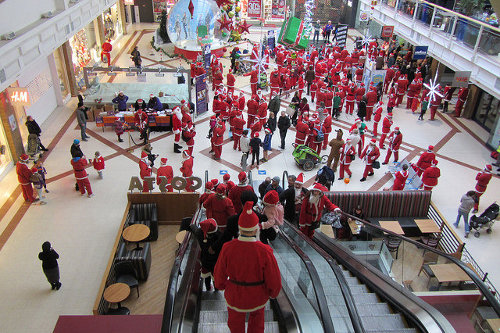Pop-up promotions have become an increasingly popular marketing tool for small businesses and start-ups, some people even claim that they are better at launching and growing a new business than social media.

photo credit: Simon Webster / Flickr
But when it comes to the competition between social marketing and the real-world, face to face kind there doesn’t have to be a loser. Pop-up promotions and social media can be used together, and if it’s done well the whole can be significantly bigger than the sum of its parts. Which is why pop-up space provider Promotional Space put together a simple infographic to show you how to incorporate your social media marketing with pop-ups and your pop-up marketing with social media.

The key is to use your event or promotion to create a buzz, which sounds like a cliché and simple but it is never the less important to keep front of mind. A pop-up needs that buzz not only during the event, but before and after as well.
Social media can be a great way to get a lot of people involved on the day and excited beforehand. If you’re tweeting at the venue and the local press or bloggers about the awesome things you’re going to do then there’s every chance that they’ll be just as excited and help generate noise and publicity for what you’re doing. Giving you more coverage and getting your brand in front of more eyeballs.
It’s also easy to ruin the perception of an event simply by taking bad photos. Everyone has a camera phone these days, but unsurprisingly not everyone takes pictures as well as Annie Leibovitz. By thinking about a few basics your promotion will look ten-times better. Which not only pays off on the day, but after the event, when you’re tweeting (again) or emailing at those local reporters to tell them why they should write about the amazing event that just happened.
The bottom line
With savvy use of social media you can definitely increase the impact of your pop-up event. But that’s not all, by thinking about how you’ll incorporate social media at the planning stage you’ll find yourself thinking about what looks good, what’s interesting, what works and what doesn’t and you’ll most likely end up designing a better event to begin with.


